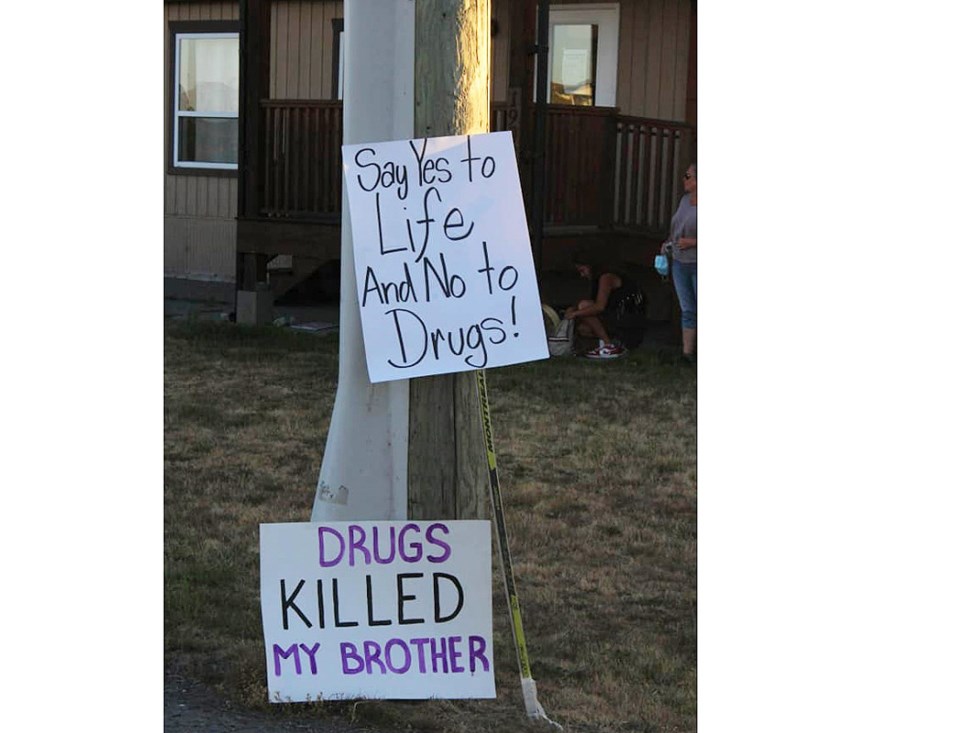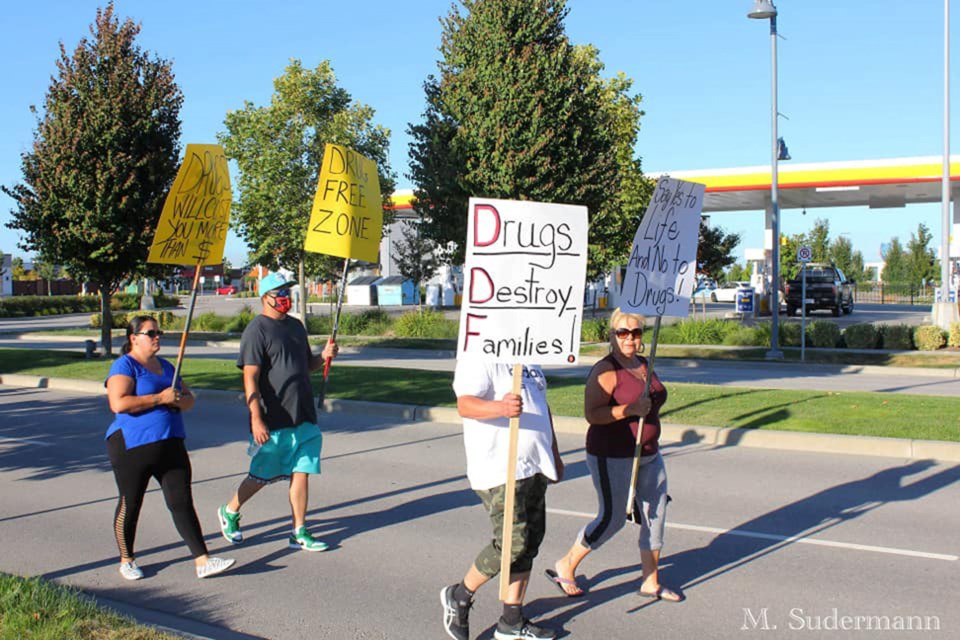It was meant to raise awareness that the Tsawwassen First Nation can no longer stand idle and wait for police to address the drug issue in the community.
Those attending a protest walk at the First Nation Wednesday night had that to say as they tried to raise awareness how the drug crises is hitting Indigenous communities, including the TFN, particularly hard, and drug dealers are having an easy time doing business on Tsawwassen Lands.
The event, not sponsored by the TFN government, was organized by members who gathered at the administration offices and then walked to the corner of Blue Heron Way and Salish Sea Drive.
They gave passing motorists information that more needs to be done and had a message for drug dealers to stay away from the community.
Over a couple dozen including elders and youth took part in the event.
Laura Baird, one of the organizers who helped put together the Facebook page TFN Community Members for Safety and Empowerment, said this year alone saw several people living at the TFN suffer overdoses with one fatality.
Noting even more dangerous, poorer quality drugs are being dealt, she said a big problem is that if police manage to remove one drug dealer entering the TFN, others are quick to replace them.
Organizer Jen Connors agreed, saying that during the rally a known drug dealer drove right by them into the community.

“The big thing is some of us are getting frustrated by police. I’m working with youth outside this summer and I’m watching drug dealers drive by while there’s cops there. Tsawwassen First Nation has to pay Delta police to be down here but we’re still seeing these drug dealers come on and off the reserve constantly,” she said after the rally.
Another big problem is that it’s a tight-knit community where drug dealers have befriended some of the young people who don’t want to be known as “rats” among their peers.
It’s important to convince young people they can say no and do have the power to make positive changes within their own community, said Connors.
Some of the ideas that members raised included having security checks for those entering the community, she said, noting it’s not about keeping people out, but keeping undesirables away.
Connors added they’re already considering holding another rally.
A report by the First Nations Health Authority notes the opioid public health emergency has disproportionately affected First Nations peoples.
Although First Nations in B.C. comprise 3.4 per cent of the population, 14 per cent of all overdose events in this province were experienced by First Nations people and they are five times more likely than non-First Nations to experience an overdose event.
Ten per cent of all overdose deaths in B.C. were First Nations people and First Nations people are three times more likely to die due to an overdose than non-First Nations.



